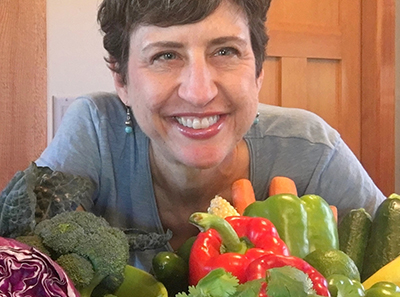We need to eat more foods that come from plants. Healthcare professionals encourage us to eat better and won’t deny that the benefits of a diet high in vegetables and fruits will assist with weight management and help prevent and reverse chronic health conditions. So how do you start the journey toward a whole food, plant-based diet?
 1.) Put more plants on your plate
1.) Put more plants on your plate
Sounds ridiculously simple and it is. When no longer the token side dish, plants can easily become the focal point of your meals. As you add nutritious plants to your diet, you will naturally push unhealthier foods off your plate. Consider minestrone soup and salad, hummus wraps loaded with veggies, and black bean chili topped with colorful corn salsa. Plant foods contain macronutrients, micronutrients, fiber, antioxidants, and phytonutrients. They have everything needed to run the human body at peak performance. In addition, antioxidants and phytonutrients transfer their protective powers from the plant to us, so that not only do our stomachs get fed but our cells are fueled to help prevent chronic diseases such as heart disease, diabetes and cancer.
 2.) Fill up on fiber
2.) Fill up on fiber
There is a wide selection of foods that contain healthy fiber and they are found only in plants: beans, vegetables, fruits and whole grains. Plants by the very nature of being plants contain the roughage that not only cleanses your innards but fills you up. Fiber is also key in removing a surplus of hormones and cholesterol to prevent them from building up in your body. Additionally, fiber helps trim away extra pounds by controlling appetite naturally: foods high in fiber are also inherently low in calories and alert your brain when your stomach is full before you devour excess calories. Start by adding oatmeal and berries to your morning breakfast or a side salad filled with colorful veggies to your typical dinner. These options contain high amounts of fiber that can be easily introduced into meals already consumed.
 3.) Consume whole foods versus faux foods
3.) Consume whole foods versus faux foods
How many ingredients are in a head of broccoli? Trick question? You don’t see an ingredient list attached to a head of broccoli because it is a whole food – it is a broccoli and tastes like broccoli. You get what you see and taste. However, a frozen broccoli quiche might alarm you if you flip over the box and read the ingredients list. Not only will you see a long list of items, you may not recognize the majority of additives, chemicals, and flavor enhancers present to make the food “shelf stable”. If a food item does not appear to age and go bad, well then it is probably not a food you should be eating.
 4.) Eat the rainbow
4.) Eat the rainbow
Walk the produce aisle of the grocery store and choose vegetables and fruits of varied colors and hues. Select different colors and sizes of beans from the dry goods bins. Choose a variety of seeds and nuts. The wider you cast your “color net,” the higher your intake of healthy nutrients will be, and, thus, the healthier you will be.
 5.) Don’t think too hard
5.) Don’t think too hard
Often people who start to eat more plants become worried they won’t get enough protein or iron or calcium or…fill in the blank. Realize that foods don’t work in isolation; eating is a marvelous, natural synergistic process. Rather than analyze and worry, enjoy. Eat a variety of plants. Eat plenty of whole foods. Eat mindfully. Eat until satiated. The beauty of eating a whole food, plant-based diet is that when you focus on what you eat, rather than how much you eat, calories and nutrients take care of themselves.
Wishing you a day filled with plant-based joy!
Chris Kalinich of Plant 2 Platter & Sedona VegFest Organizer









